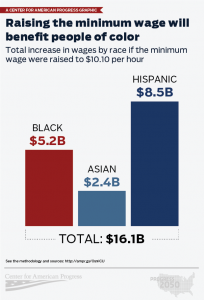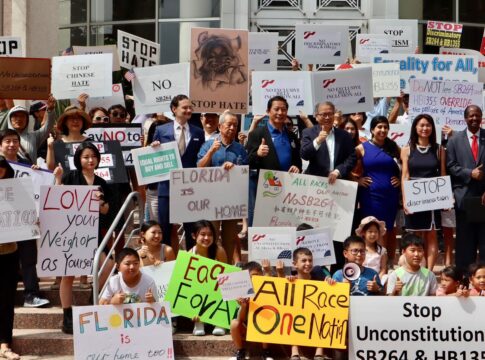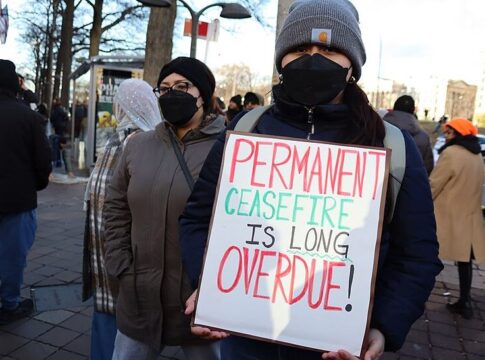Today, the U.S. Senate intends to vote on the “Minimum Wage Fairness Act”, a bill which would raise the minimum wage to $10.10. Opponents of the bill have been saying that a hike in the minimum wage would “hurt… minorities and kids” the most. This is simply not true. In fact, increasing the minimum wage would increase the total combined wages of people of color by $16.1 billion (graphic from Center for American Progress).
The federal minimum wage has stagnated at $7.25 per hour since 2009, which has resulted in millions of Americans struggling in poverty despite holding full-time employment, and relying on benefits like SNAP to sustain themselves and their families. If the minimum wage had kept up with inflation between 1968 and today, the minimum wage would be over $10.50. It is no surprise that every community would benefit from an increase of the minimum wage, but people of color, including members of the Asian American and Pacific Islander community, stand to benefit significantly.
The current minimum wage economically marginalizes millions of Americans who have the capacity to generate growth in the economy. The Minimum Wage Fairness Act would be a significant step to address this gap and help lift people out of poverty. Blacks, Latinos, and Asians, who constitute a larger share of minimum-wage earners than their share of the overall workforce, would benefit significantly. Recent analysis by the Center for American Progress found that a raise in the minimum wage would increase the wages of Asian Americans in the U.S. by $2.4 billion.
An increase in the minimum wage would not only benefit individual workers but also the broader economy, reducing government spending, as fewer people would need to rely on programs such as SNAP, producing $46 billion in savings over 10 years.
LATEST STORIES
The economy at large would also greatly benefit from workers having more spending money in their pockets should the minimum wage be increased to $10.10. Workers would have more money to spend on basic needs, giving businesses more customers, stimulating the country’s economy, and increasing demand for additional workers.
Additionally, despite what opponents would have Americans believe, raising the minimum wage does not hurt employment. More than 600 economists, including Nobel Prize winners, endorse raising the minimum wage to $10.10 per hour, agreeing that past increases in the minimum wage had little to no effect on employment levels.
Wages for low- and middle-income workers have remained stagnant years after the Great Recession was officially declared as having ended. Given the great gap between the poverty rates for communities of color and whites, and how the historical precedent for our communitiesexperiencing larger economic losses during economic downturns than the rest of the population, it is time to even the playing field for all working Americans by raising the minimum wage. This would be a welcome and needed change for people of color, who are becoming a growing share of our population.
Vanessa Cárdenas is the Vice President of Progress 2050 at the Center for American Progress.









